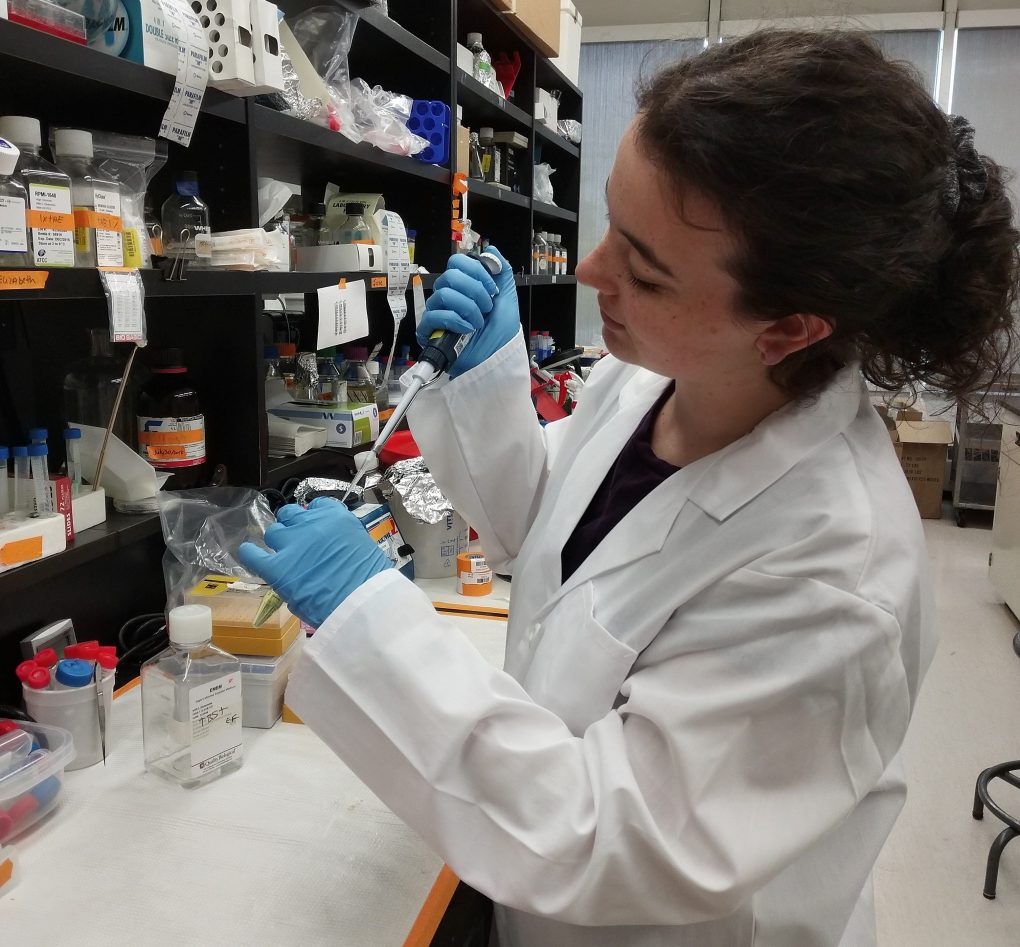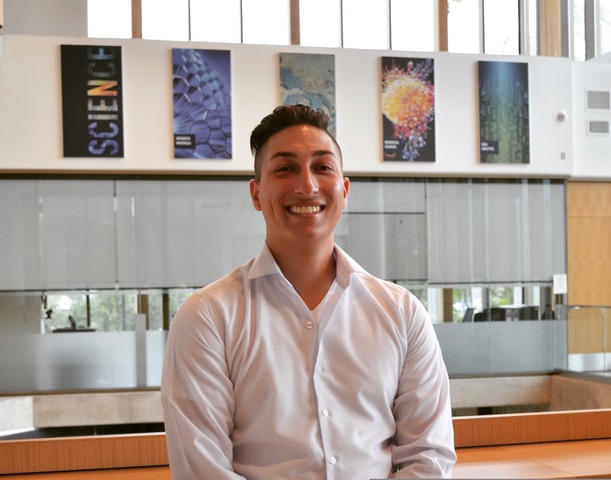This year we had 6 students completing their undergraduate thesis, the so-called 420’s thesis students. Sadly, they couldn’t present their results at our yearly department colloquium because of the COVID-19 pandemic.
Three of these students are sharing the highlight of their work in the Porter Lab.

Isabelle joined Porter Lab in 2017 as a volunteer student and in September she will start a Master’s thesis project in our lab.
The Role of Spy1 During Mammary Gland Involution
One in eight women will be diagnosed with breast cancer in her lifetime. From puberty to menopause, factors attributed to breast cancer fluctuate with the natural development of the breasts. A period of increased breast cancer risk, metastatic potential, and higher mortality rates occur following childbirth. The propensity of postpartum breast cancer (PPBC) is in part due to the process of involution: when the mammary gland reverts to non-lactating tissue through intense remodeling, balancing high rates of cell death and regeneration. The increased amount of cellular activity occurring in the tissue during mammary involution creates the perfect microenvironment for tumorigenesis. Our lab studies the Spy1 protein, which plays a role in promoting cell growth and stemness as well as override cell death. Importantly Spy1 is elevated in a host of human breast cancers and correlates with more aggressive forms of cancer. Interestingly, levels of Spy1 are also elevated during involution. We hypothesized that Spy1 protects the cell population necessary for normal mammary gland reconstitution post involution. To address this, an in vitro involution model was deployed with the mouse epithelial cell line (HC11) over a time course of delivery and withdrawal of hormonal cues to study post-differentiation (or mock ‘involution’) cell proliferation and death. This was paired with in vivo tissue collection of the mouse model overexpressing Spy1 in the mammary gland (MMTV-Spy1). At peak lactation, pups were removed to trigger involution and mammary glands were collected during an involution time course for analysis. In vitro results suggest the intrinsic ability of Spy1 as capable of maintaining high proliferative abilities and stemness post-differentiation; whereas in vivo data indicates decreased proliferation and apoptosis in involution while maintaining higher epithelial content. This research begins to articulate the role of Spy1 during normal mammary involution in maintaining the survival of epithelial cell populations, and how overexpression could potentially play a role in the predisposition of the breast to oncogenesis.

Maheen joined Porter Lab in 2017 as a volunteer student and in September she will start a Genetic Counselling Graduate Program at Wayne State University School of Medicine.
Exploring the Characteristics of Spy1 Overexpression in Glioblastoma Multiforme
Glioblastoma Multiforme (GBM) is an aggressive type of brain cancer that develops from glial cells. It is highly malignant and common, accounting for more than 60% of all brain tumors in adults with an average prognosis of only fourteen months. A cell cycle regulator protein, Spy1, has been found to be highly expressed in GBM. Spy1 is an unusual cell cycle protein because it has been observed to overpass the normal cell-cycle checkpoints and elevated levels of Spy1 have been implicated in poor prognosis in GBM patients. The aim of this project is to characterize the role of Spy1 protein in GBM. The mouse glioma GL261 cell line which was employed in all in vitro and in vivo experiments performed in this study contains several molecular alterations characteristic of GBM. We infected GL261 cells using lentivirus to overexpress Spy1 protein. Using neurosphere formation assays we found that GL261 cells with increased Spy1 expression demonstrated elevated self-renewal capacity as compared to control. Through stereotactic injection technique, we generated GL261 Spy1 and control tumours in GL261 line syngeneic mice to better understand the role of Spy1 protein in vivo. Using immunohistochemistry, we demonstrated increased angiogenesis in Spy1 tumours compared to controls. We found that increased Spy1 expression both in vitro and in vivo correlated with some severe pathological features seen in GBM patients; hence, implicating the role of Spy1 in GBM progression and aggressiveness. In summary, the results of this project contribute to a better understanding of Spy1 functionality in GBM and provide insight for the future identification of potential therapeutic strategies.

Nick joined Porter Lab in 2017 as a volunteer student and in September he will start a Master’s thesis project in our lab.
A Potential Driving Force of the Breast Cancer Stem Cell Population in Triple Negative Breast Cancer
My project focused on Triple Negative Breast Cancer (TNBC), a rare subtype that occurs in 10-15% of breast cancer diagnoses. Of importance, this subtype tends to be more aggressive and have a poorer prognosis for patients. One reason for this is a greater proportion of cells known as breast cancer stem cells (BCSC) which are capable of not only self-renewing but becoming the various cell types that make up the bulk tumour mass. This work sought to investigate the role of manipulated levels of Spy1, an atypical cell cycle mediator on the BCSC population. The results indicated that Spy1 was capable of expanding this population in vitro as well as in an in vivo mouse model, leading to a greater disease state. This work serves as a potential platform for utilizing this protein as a potential targeted therapy in order to increase the prognosis of patients diagnosed with TNBC.
Below, Nick is sharing with us a little bit of his experience in the Porter Lab.
“Undertaking the journey of an undergraduate thesis has been one of the most rewarding experiences I have been a part of. Not only did this opportunity allow me to find my passion for research but it allowed me to develop a variety of skills. It allowed me to learn how to manage my time effectively, develop my role in a team environment, and understand the importance of patience. Research can be a very trying endeavour with failures more prevalent than successes. I have repeated the same experiment numerous times due to the finicky nature of science. However, these obstacles allowed me to appreciate the instances when I succeeded even more so. This is something I have applied to my outlook on everyday life. Lastly, my experience as a thesis student has allowed me to see the difference I am making in the cancer research realm. Even though the contribution I am making may represent an infinitely small piece of the puzzle that we are trying to solve, I find the fact that I am able to contribute the coolest aspect of this opportunity. “
